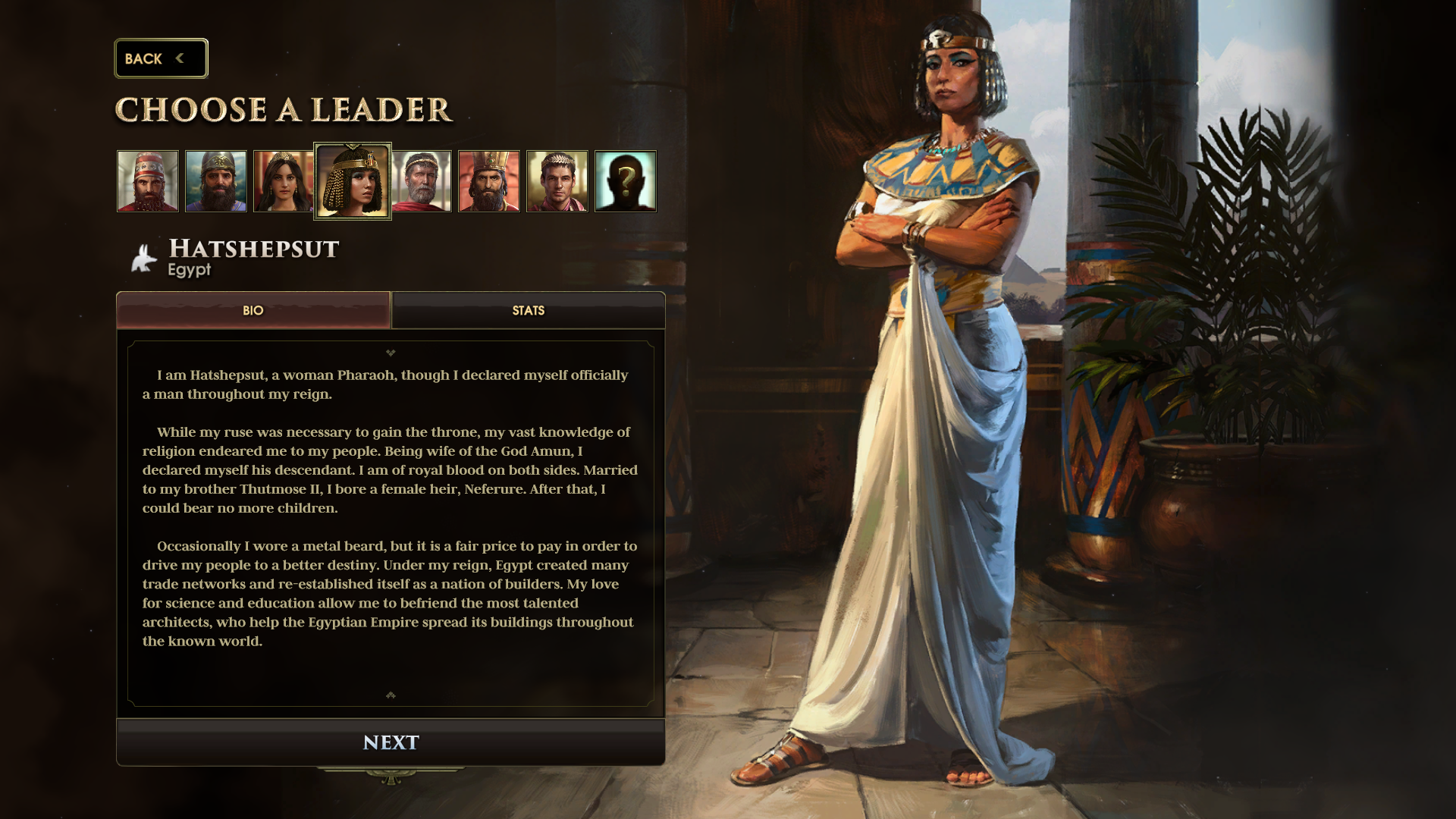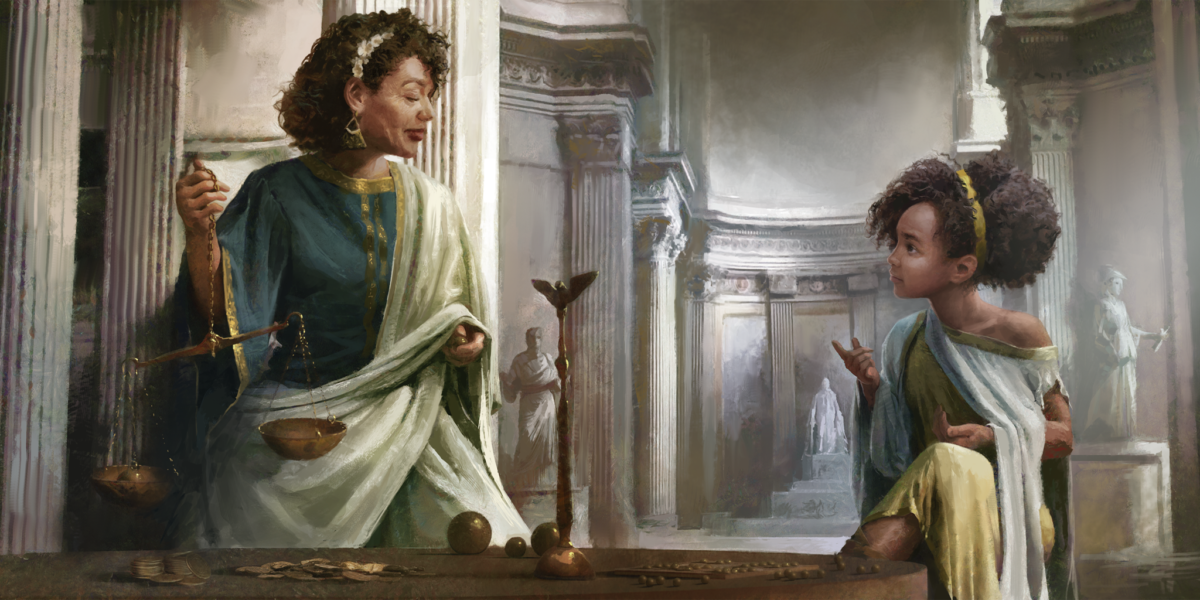Ethical game design is still a fairly new topic. It was not really a consideration at all when the first arcade games appeared, as games had to be so abstract that it was hard to map real-world issues onto them.
Over time, of course, this changed, and the world around games changed as well. In particular, strategy games had a general problem because the games that were the most fun to play – or at least, were the easiest to develop to be fun to play – usually involved war and conquest. There will always be a place for wargames, of course, but not all wars are the same. World War II is always going to be a popular – and indeed, necessary – topic for games. But a game that is only played from the side of the Nazis (such as 1994’s Panzer General) is now absolutely a thing of the past. More relevant to 4X games like Old World, games involving colonization as a positive are now increasingly seen as problematic. It is doubtful that a game like the Sid Meier’s Civilization spinoff Colonization (1994) would be made again, at least without a lot more context for what colonization meant for the people who already lived in the New World. However, games like Civilization are in a tricky position, because it’s impossible to make a game about all of world history without having at least some mechanics that represents colonization.
A simple solution is to choose a different theme where these tricky issues are irrelevant. When we made Offworld Trading Company (2016), we just needed a setting where raw resources could be exploited for a developed market that was off the map. Thus, it would have been very easy for us to make almost the exact same game but to set it in the 17th-century Caribbean Sea, with the player controlling the English or the Dutch or the Spanish. Ideally, there should still be a way to make a game set in this place and time, but for a game focused primarily on economics, the setting would bring a lot of problematic baggage that could be hurtful to our audience, and also ultimately irrelevant to our design goals. Thus, we set the game on Mars instead, where the absence of native life and historical tragedies makes it a safe playground for everyone to have fun just trying to make the most money.
Old World (2021)

However, we also don’t want to restrict ourselves to just making games with sci-fi or fantasy settings. We have a passion for history, and we wanted to revisit 4X games, so we set Old World in classical antiquity for a number of reasons. First of all, we were making a game about characters. We therefore had to limit ourselves to a specific era, since the game had to progress at a human time scale (meaning a couple hundred years instead of six thousand). Thus, we just needed to choose the right era, and classical antiquity had the advantage of being far enough in the past that, although just as many historical tragedies occured back then, these tragedies are not still causing damage today (unlike chattel slavery of Africans by Europeans during the colonization of the New World). The ancient era is not quite as safe as an imaginary setting, but it is certainly a lot safer than recent history.
Of course, how the game represents human relations will still be an important ethical question, even if we are looking two thousand years into the past. A good example is our modelling of slavery, which was a reality in the ancient world, one we didn’t want to just ignore. Erasing parts of the past is an ethical question as well – it is not necessarily better to just pretend that slavery didn’t happen while making a game as players will build a model of the past based on our design decisions.
Another difficult issue for us, (most) strategy game designers, is that our games need to be replayable, so we can’t have “right” or “wrong” decisions. It’s perhaps an open question if games which aren’t pedagogical should ever frame a choice as being always wrong (otherwise, what is the point of giving the player agency?), but in a strategy game, slavery absolutely cannot be part of the game if the designers are just going to punish the player for choosing it. However, we can definitely take seriously what the costs and benefits of choosing slavery will be.
For Old World, we give the player a diametric choice of slavery or freedom. Slavery gives the player a flat Orders boost (more actions each turn) but increases Discontent each turn in all cities. Freedom, on the other hand, increases Science each turn in all cities. Thus, in general, Slavery is a stronger choice earlier in the game (because of the flat Orders increase), but Freedom is a better choice as the game carries on (to keep Discontent under control and to benefit from more Science as the nation grows). We felt that making Slavery the short-term choice, and Freedom the long-term one, put the game in a better place ethically, as the opposite arrangement would be giving a very negative message (that human societies will develop from freedom to slavery instead of vice-versa). Our narrative system also includes a number of events that can only happen if you opt into Slavery, such as a series of revolts inspired by Spartacus and the Servile Wars of Rome, giving slaves some agency within our game setting.
Finally, we also gave much consideration to representation in Old World. Ethnically, the Middle East of classical antiquity included a wide mix of peoples from Asia, Africa, and Europe, and we made sure that our character portraits and event art represented that. We often sent pieces back to our artists who would still default to white Europeans for their paintings, reminding them that we wanted the game to represent the ethnic diversity of the time. (In fact, our artists came from all around the world, including Azerbaijan, Turkey, Ecuador, and Singapore, but they are still weighed down by centuries of European hegemony that causes them to see the average person as white).
More importantly from a game design perspective, we made almost no distinction between what men and women can do in the game. Men are not placed ahead of women in the succession, and women can be generals, governors, and councillors just like men can. Obviously, our main goal with this decision was not historical accuracy, but we were always direct about this when discussing the systems. Nonetheless, although it changes greatly depending on which culture is discussed (and the typical western focus on Rome does us no favors), women played a much larger role in leadership during classical antiquity than one might assume before scratching the surface.
Our narrative system also emphasized women from the era, such as Zenobia, Boudica, and Atossa, who were leaders or played important political roles. From a purely game design perspective, allowing women to fill the same roles as men is strictly better because then every character in the game is relevant. The alternative would mean that we would need to create twice as many characters to make sure there were enough candidates for governors and generals, and the game is better with fewer characters so that the player can keep track of them more easily.
We did include options which enforce male-only succession for players who prefer that, but we included a female-only option as well because, well, why not? At the end of the day, we are making a historical fantasia, and we primarily want to make a game that makes the world around us today a better place.
Leyla Johnson is CEO of Mohawk Games and Creative Director for the historical 4X strategy game Old World. Leyla has experience working in a range of games industry roles, including narrative design and art direction.
